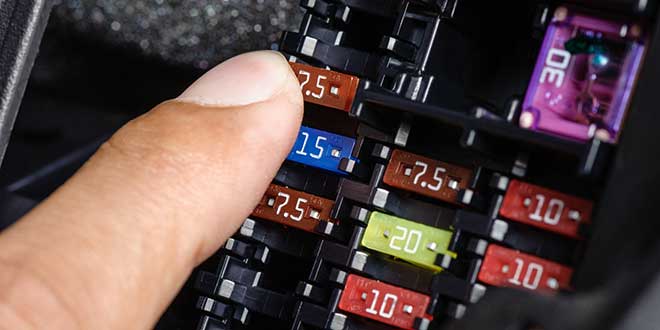
Replace Blown Fuse In Car
Share
About Car Fuse.
A fuse is a current passing point, a connection that supports maximum amperage. This is important, because when that amperage is exceeded, the connection is broken, that is, the fuse melts. It should be noted this, because the main function of a fuse is to melt, because when it melts, because to electrical devices a rise in current intensity.
About Replace the Blown Fuse of a Car.
The fact that a fuse melts is vital to prevent the passage of current to the electrical or electronic device that protects and when protecting different devices, there are different types of fuses, which is differentiated by the maximum amperage they support.
There are fuses of less than 10 amps that serve for the alarm or airbag. The 10 amp fuses that take care of the lights. The 15 amp fuses that protect the windshield wipers or fuel pump. And finally, fuses over 20 amps, which are already the ones that drive the starter or climate control.
It may seem complicated, but it is not, since the fuses can be easily identified by their color or they already directly have a mark indicating the number of the amperage. And knowing this is very important, because when an electrical device fails and you have to change a fuse, you will know what you are doing and you will not be confused by so many fuses.
The last thing you should know before replacing a blown fuse in a car is that you should refer to the vehicle Owner's Manual for the location of the fuse box.

Tools Required:
- Owner's Manual
- Fuse Extraction Tool
Materials Required:
Fuse.
Steps for Replace the Blown Fuse of a Car:
- Check that the problem is with fuses: if an electrical device suddenly stops working, example, the radio goes off, the lights don't turn on or the windows locked, it's very likely that it was because of the fuses. On the other hand, if an electrical device has been slowly degenerating, perhaps the fuse is not the problem.
- Find the fuse box: as already mentioned before, the owner's manual will tell you where the fuse box is located. They are usually on the driver's side and under the steering wheel, but this varies depending on the vehicle. Having located the fuse box, check the back of it, which should have a diagram indicating which device protects each fuse. This is important, because you don't want to change the fuse that protects the wiper if the problem is in the lights.
- Test the fuses: Remove the cover from the box to access the fuses. You can try to test the fuses with a multimeter, but if you do not have this tool, simply remove the fuse you believe is damaged and look for a broken or blown fuse.
- Replace the blown fuse with the new one: Fuse boxes sometimes bring a fuse removal tool with you, but if that's not your case, it doesn't matter, you can pull and insert the fuses by hand. Remember to be guided by the diagram and, above all, replace the blown fuse with one of the same type and amperage. If you place a fuse with a higher amperage rating, you will seriously damage your electrical system.
- Time to review your work: now it only remains to test the device that had stopped working, for this turn on the vehicle and verify. If it's working, then there was only one temporary power surge.

Latest Recommendations.
If the new fuse melted after you replaced the old blown fuse, that means you have a much bigger electrical problem and it's time for you to call the mechanic.
